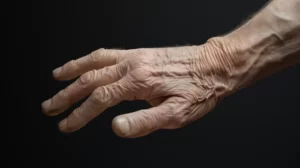You might be familiar with the double-edged sword that is sunscreen. On one hand, it’s supposed to protect us from skin cancer caused by ultraviolet rays. On the other hand, it exposes us to toxins and even prevents our bodies from producing the all-important vitamin D. With so much at stake, you might be wondering how you can strike the right balance. One possible solution can be found in the seeds of the achiote shrub, commonly called annatto.
The Trouble with Sunscreen
Among the many problematic elements in sunscreen, benzophenones (also known as oxybenzones) stand out. These substances block out ultraviolet light but might also trigger physiological changes. According to researchers, when you use sunscreens containing benzophenones or related chemicals, some of them are absorbed through the skin and enter your bloodstream. Their analysis showed that women with higher levels of these chemicals were more likely to be diagnosed with endometriosis.
Additionally, excessive use of sunscreen can leave you deprived of much-needed vitamin D. A deficiency of vitamin D is linked to various cancers and increases your susceptibility to viral infections. This is because vitamin D isn’t just a vitamin. It’s also a bone-building hormone and the primary activator of your immune system.
The Annatto Solution
A compound called bixin, found in annatto seeds, could offer some much-needed protection. Researchers at the University of Arizona College of Pharmacy discovered that bixin prevents skin cancer cell formation and skin damage from UV radiation in mice. Dr. Georg Wondrak, an associate professor at the University of Arizona Cancer Center, says that this discovery is unique because bixin acts as a nutritional factor instead of a topical sunscreen applied to the skin. It prevents UV skin damage from the inside out by prompting cells to produce protective antioxidants and repair factors. The compound doesn’t kill skin cancer cells but prevents their formation in the first place.
While it’s possible that bixin may eventually be used to create “sunscreen” supplements, you can still benefit from incorporating annatto into your diet. Annatto is a common ingredient in Latino cultures, where seeds have been used for centuries. In the Spanish-speaking Caribbean islands, for example, annatto is used to make yellow rice and sofrito.
Incorporating Annatto into Your Diet
There are several ways to include annatto seeds in your diet and take advantage of their inside-out sun-protective properties. The spice can be sold as seeds, ground into a paste, or infused in cooking oil or lard. Look for it in the spice aisle or the ethnic food section of your grocery store. Packaging might include bottles, bags, or vacuum-sealed bricks. Ground or powdered achiote is also often mixed with other herbs, spices, and even cornstarch. Be sure to read the label if you have food allergies.
When purchasing seeds, make sure they are a bright red-orange color. Do not buy dull or brown seeds, as they are past their prime and have lost their flavor. Both seeds and ground annatto can last up to three years with proper storage. Keep them in an airtight glass container, storing them in a dark place away from light. Achiote oil or achiotina will keep for several months if stored in a glass jar in the refrigerator.
Balancing Sun Exposure
While the benefits of annatto are clear, it’s still important to limit your time in the sun to about 20 minutes per exposure. Adequate sun protection should always include a combination of sunscreen and self-care measures. By incorporating annatto into your diet, wearing protective clothing, and using sunscreen responsibly, you can better protect your skin from damage and decrease your risk of developing skin cancer.



